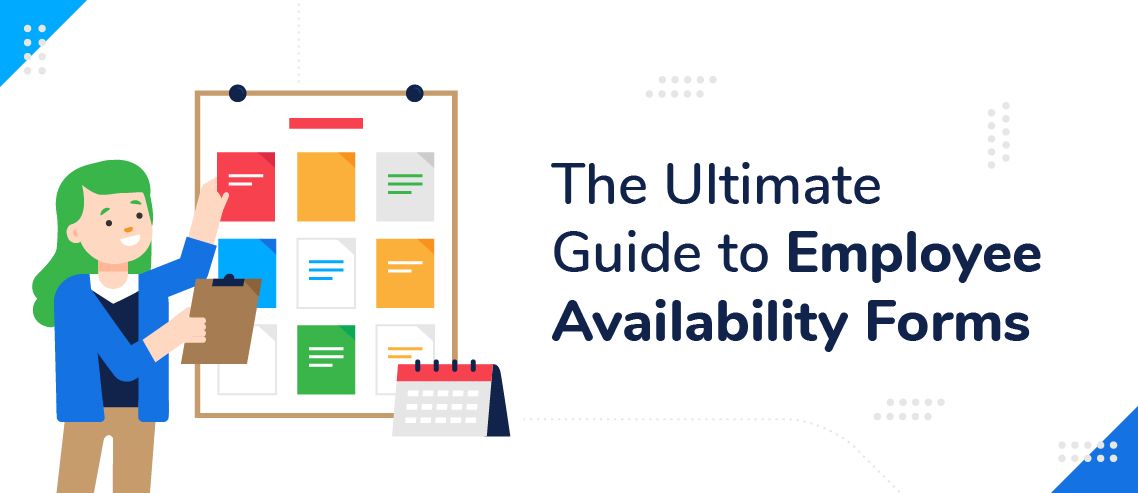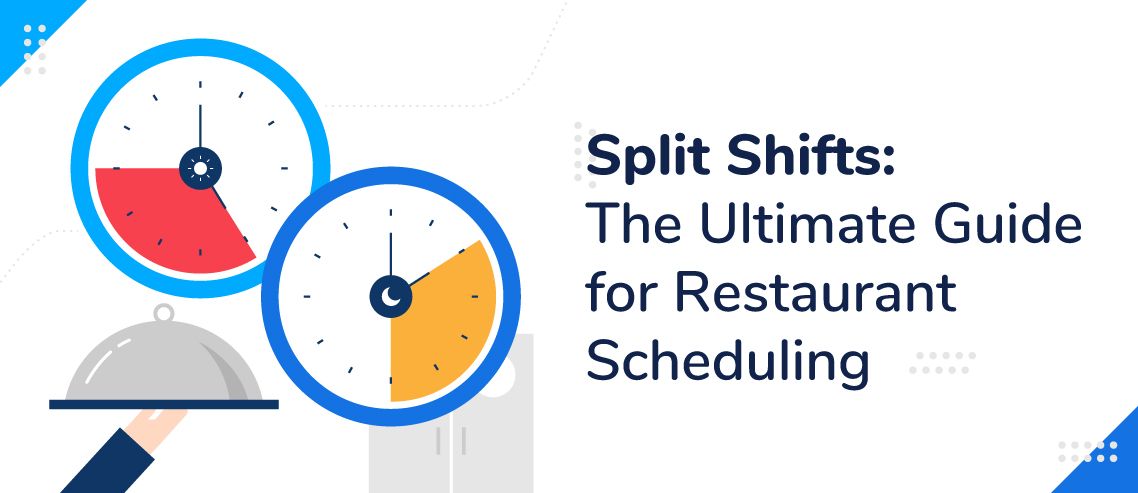The Ultimate Guide to Employee Availability Forms (with Free Template)

Employee availability forms are a vital asset for any business that employs shift workers. Businesses should ensure that their forms have a clear, concise format, and that they have a system in place to ensure that the information communicated by such forms is always available when needed.
If a business that employs shift workers fails to either hand out employee availability forms or keep a meticulous record of them, it risks being left understaffed at the last minute with no way of swapping shifts. In this case, customers can be let down. While some will give you a second chance, others won’t return, which inevitably leads to an impact on the bottom line.
Regular understaffing, on the other hand, is terrible for a brand’s reputation, as word of mouth spreads faster than ever in the era of online reviews and social media. Employee availability forms are the first line of defense against such a situation arising.
It’s not a complicated process, but it’s important to be super conscientious when it comes to ensuring employees fill in these forms, update them, and that admin staff keep a workable record of all forms. If possible, businesses should maintain an easily-accessible digital database of employee availability alongside the paper documents.
What Is an Employee Availability Form?
Simply put, an employee availability form is a document that each employee fills in with the days and hours they are available to work, and the days and hours they absolutely cannot work.
It should also contain basic information about each employee and their contact details to make the process of booking workers for shifts a straightforward one.
These forms are used in the work scheduling process, eliminating unnecessary back and forth between team leaders and workers about who can and can’t work during various hours. They should also be used to work out which employees will likely be able to cover shifts that have become available at the last minute due to sickness or emergencies.
Employee availability forms should give managers visibility over when employees actively want to work, when they can work if it is necessary, and when they will be completely unavailable due to other commitments. It should also help with forecasting – if managers are often unable to fill certain shifts, it may be time to recruit more staff.
By maintaining a thorough record of these details, scheduling should take no time at all, and managers should find themselves free to get back to other tasks, improving customer service in the process.
Why Are Employee Availability Forms Important?
Simply put, without employee availability forms – or with outdated versions – the staff scheduling process is going to get messy.
Further to this, it’s going to be extremely time consuming: managers would have to go back and forth to multiple employees to check their availability, and most likely erase and rewrite the schedule several times.
If workers’ hours are regularly chopped and changed, this inevitably leads to confusion, and employees failing to show up for work when they’re scheduled in, or else turning up ready to work when it’s not their shift. This is frustrating all around: for managers, workers, and customers.
Businesses in this situation risk being labeled “unreliable” by customers, and could even get a reputation as a bad or stressful place to work amongst managers and other employees.
In addition, if you’re regularly struggling to fill shifts, and are not sure why, employee availability forms can help you decipher where the gap is so you can fill it with new staff members who are happy to work specific shifts. This is a much better option than calling up employees who don’t want to work that shift and begging them to come in – do this too many times and they’ll likely quit.
What’s more, by using up so much of your managers’ time during the scheduling process, you’re not getting the most value out of your team, and your business could suffer for it.
Important Elements to Include in Your Employee Availability Form
You want to ensure that your employee availability form makes work scheduling and covering shifts as easy as possible.
However, you also want to be clear and concise – this is not an in-depth employment document. Employees sometimes need to be cajoled into filling in or updating their availability form, and making it simple and clear will encourage them to just complete the task once and for all.
Remember: the only way employee availability forms can do the job you need them to is if every worker fills one in, and updates it whenever necessary.
The following elements are generally always included in an employee availability form. The most basic forms will only contain these details:
-
- Name
- Contact details
- Instructions for filling in the availability form
- A shift chart for employees to fill in when they can work
- A shift chart for employees to fill in when they cannot work
- A notes section in case the employee has an upcoming vacation or needs to change their availability
- Signatures from employee and manager
- Date
However, depending on the type and size of business you run, you may also want to include additional elements such as employee ID, job title, and pay rate.
Build your form from the ground up – which elements would be most useful to include for the managers putting rotas together? How can you create the form in a way that will save them time? What’s more: how can you both meet managers’ needs and make it super clear and easy to fill in for your busy employees?
JD enjoys teaching people how to use ZoomShift to save time spent on scheduling. He’s curious, likes learning new things everyday and playing the guitar (although it’s a work in progress).



